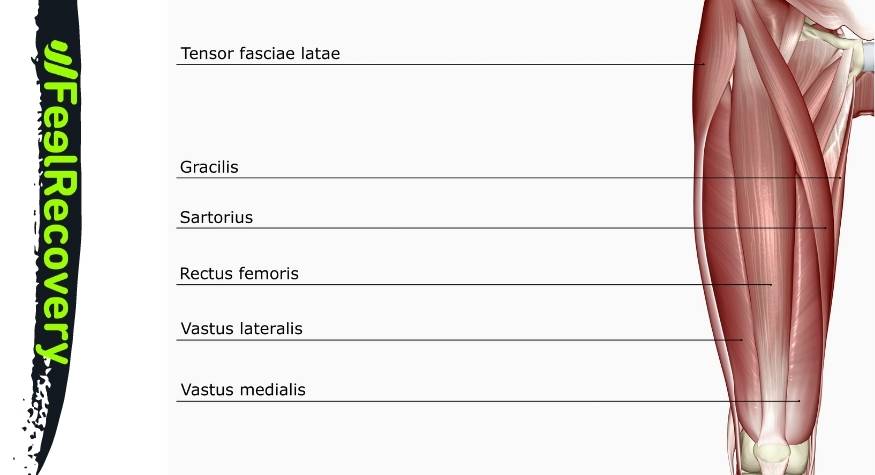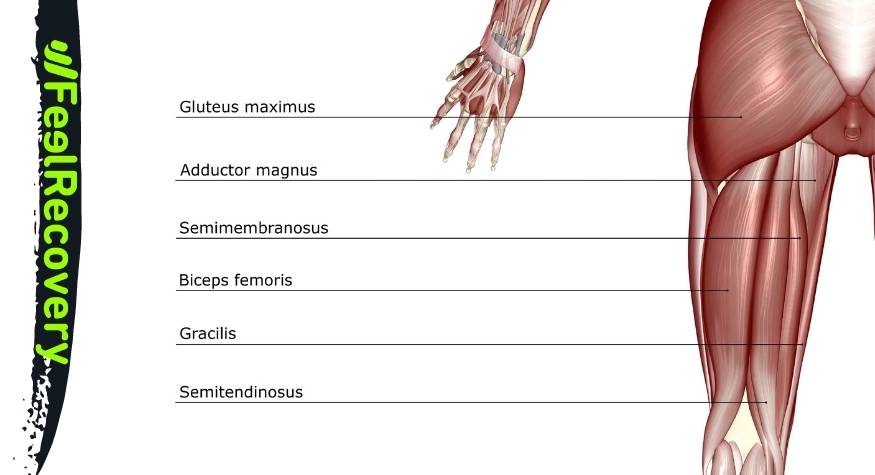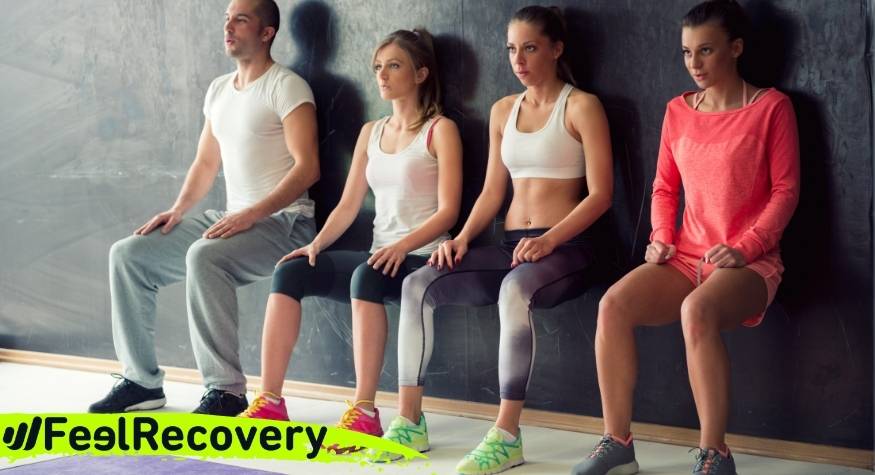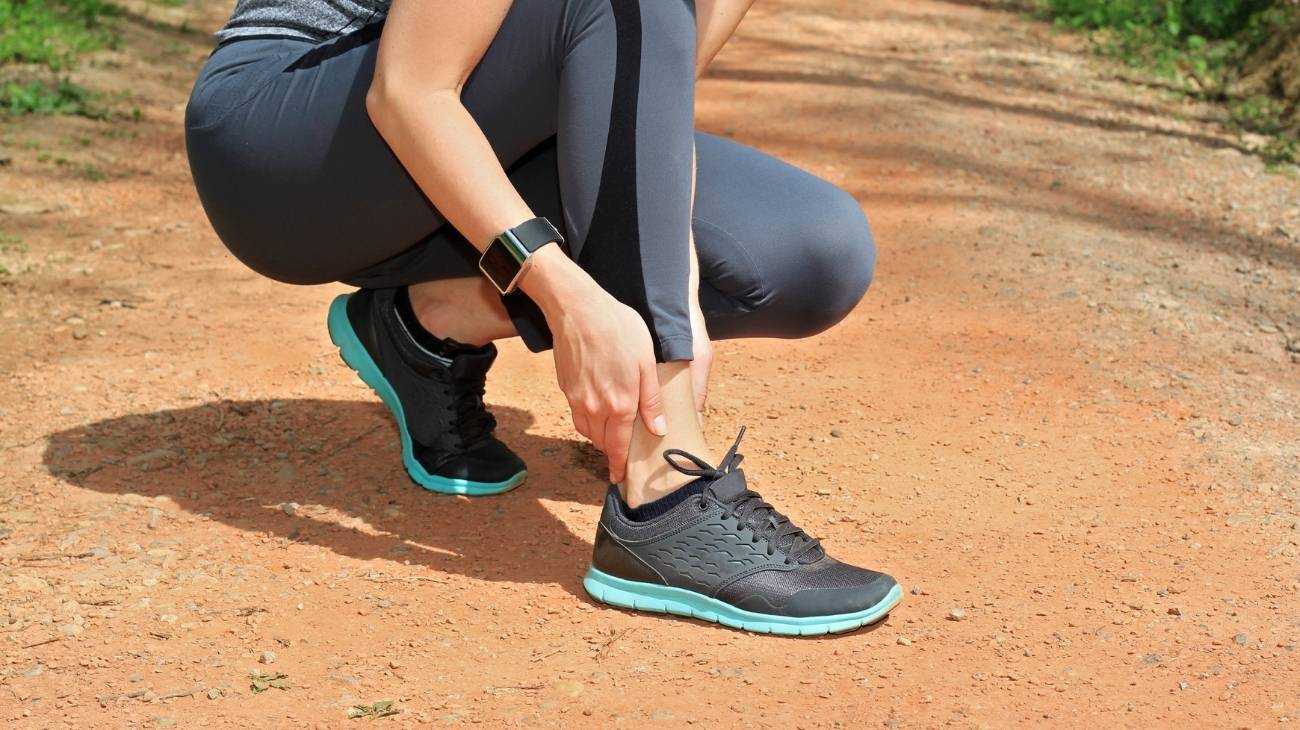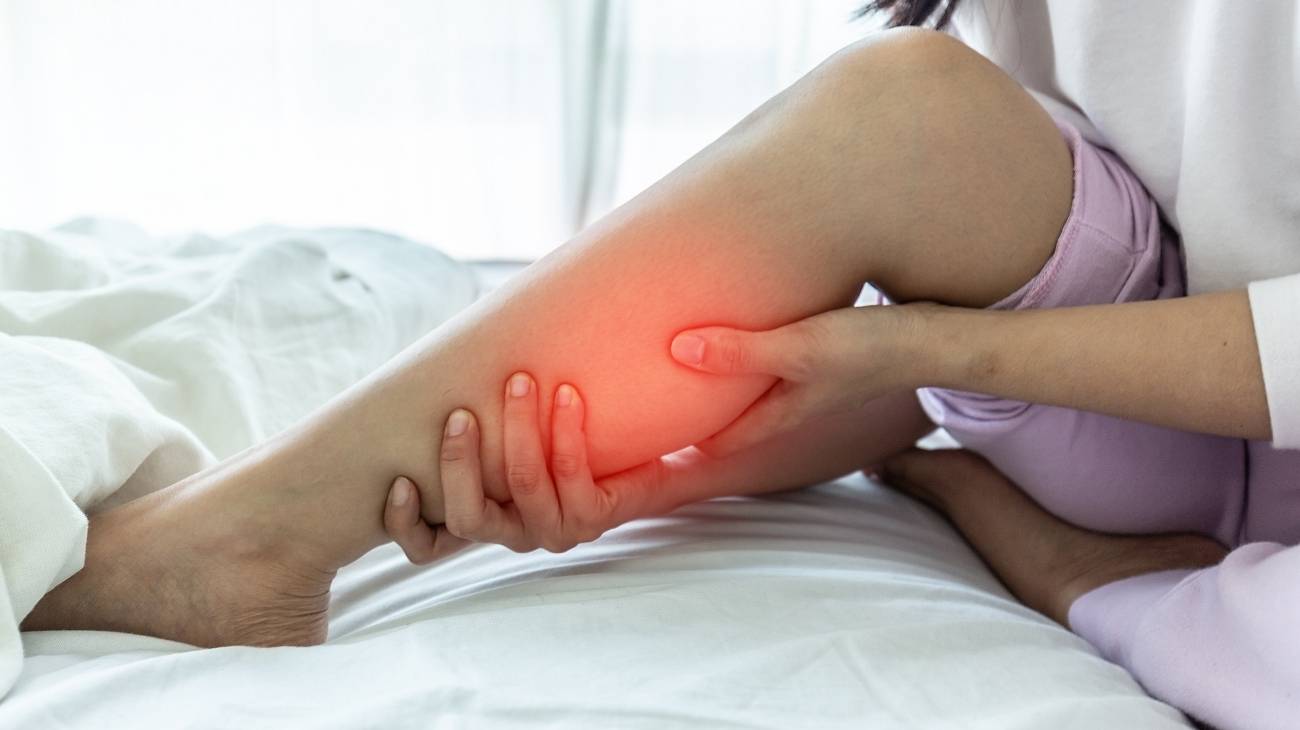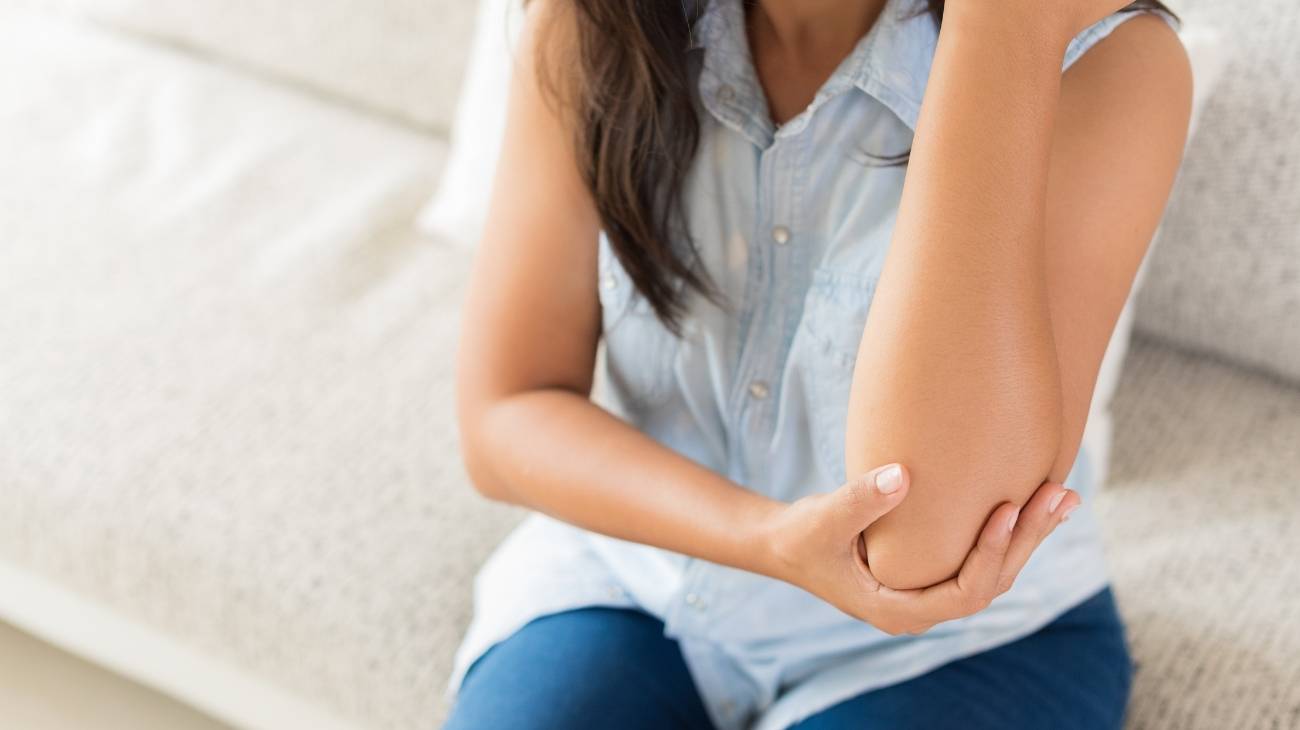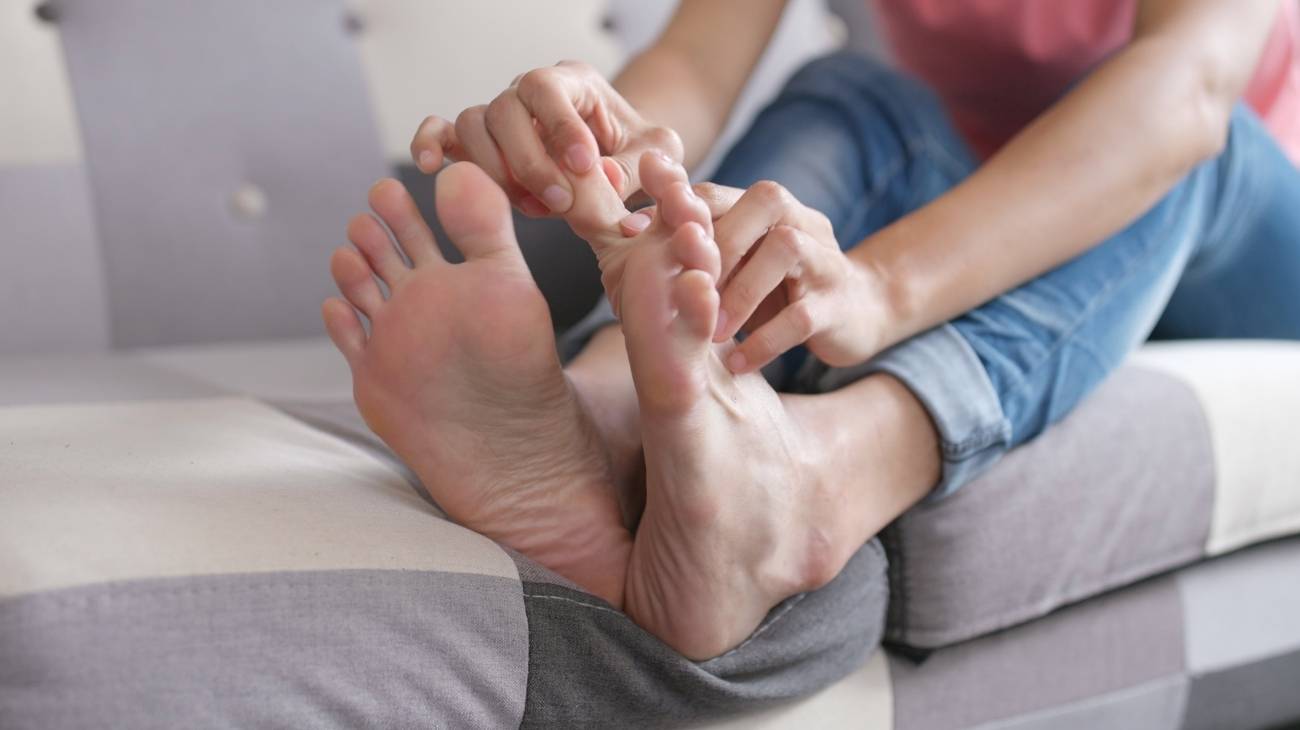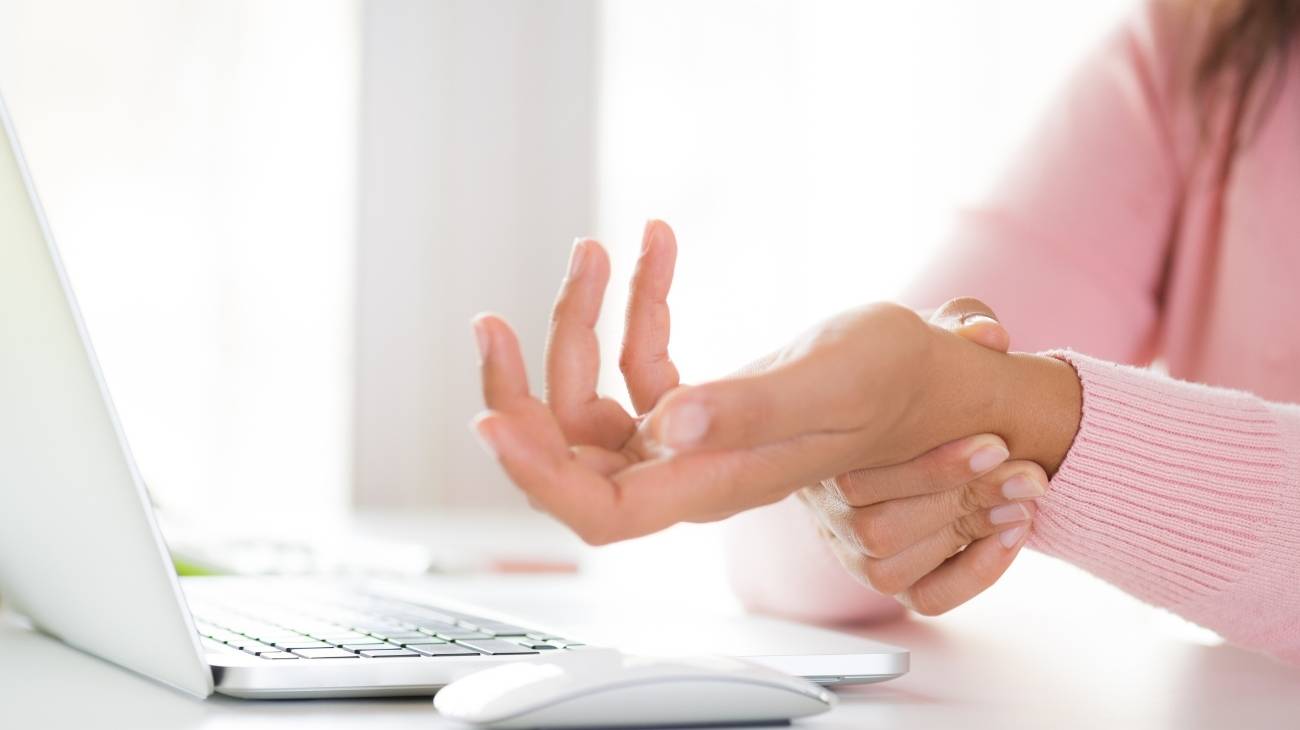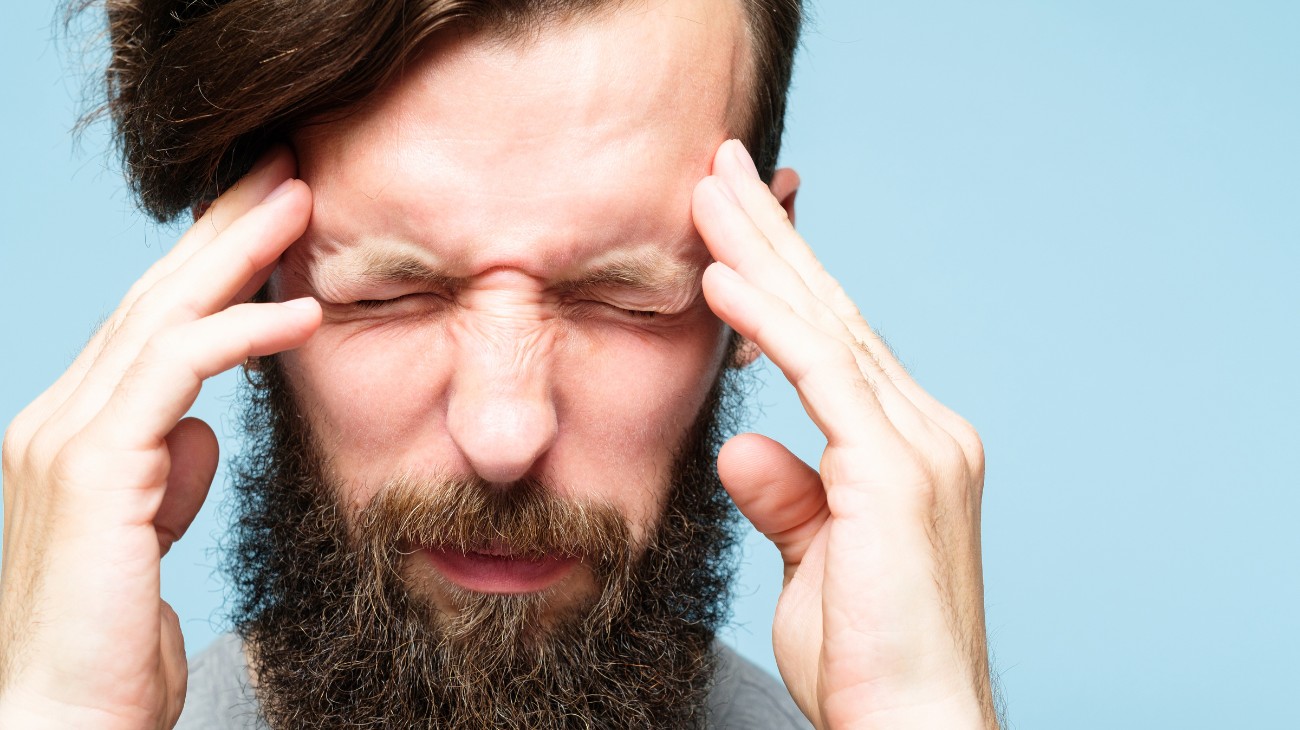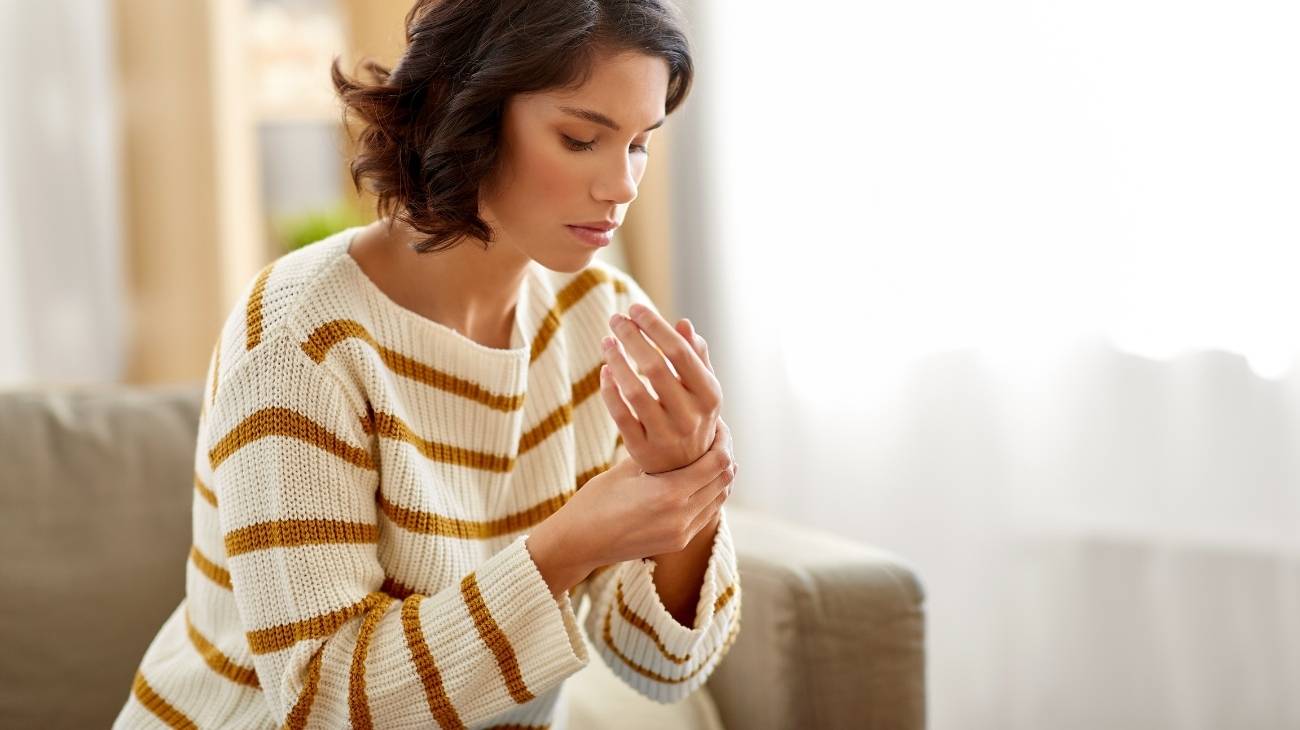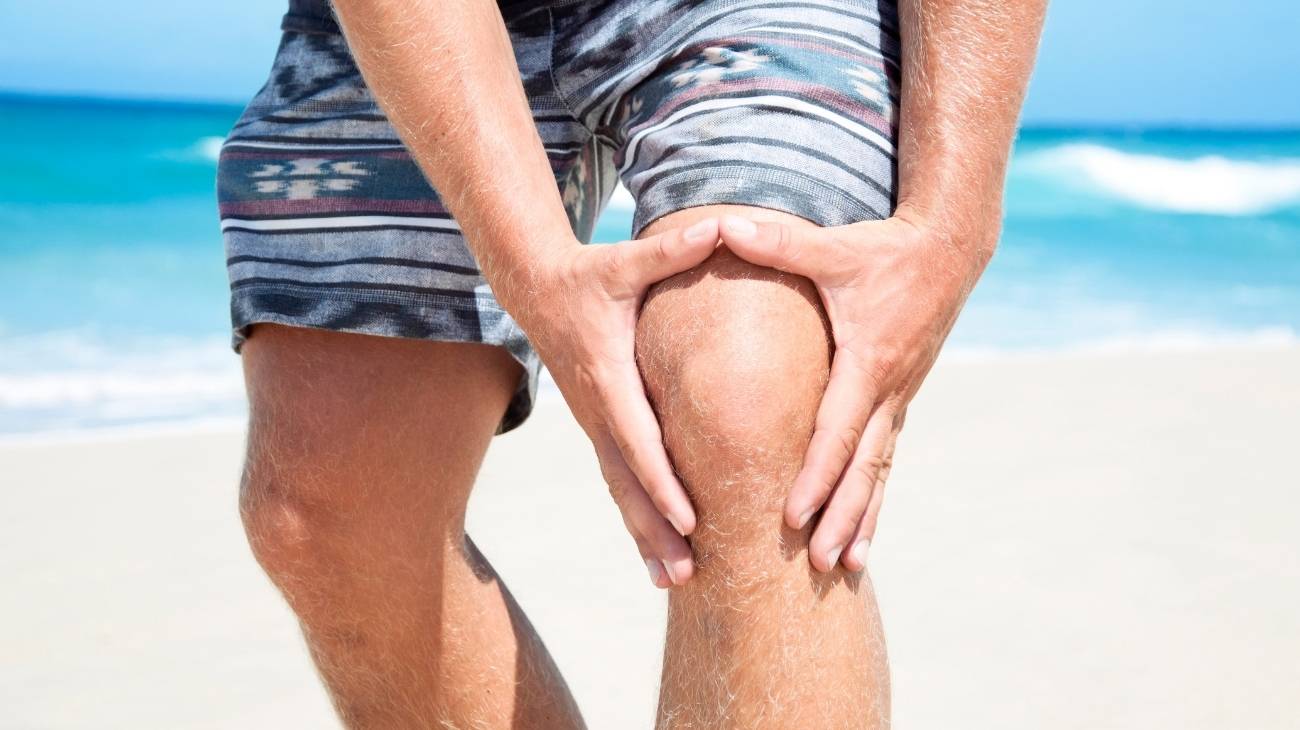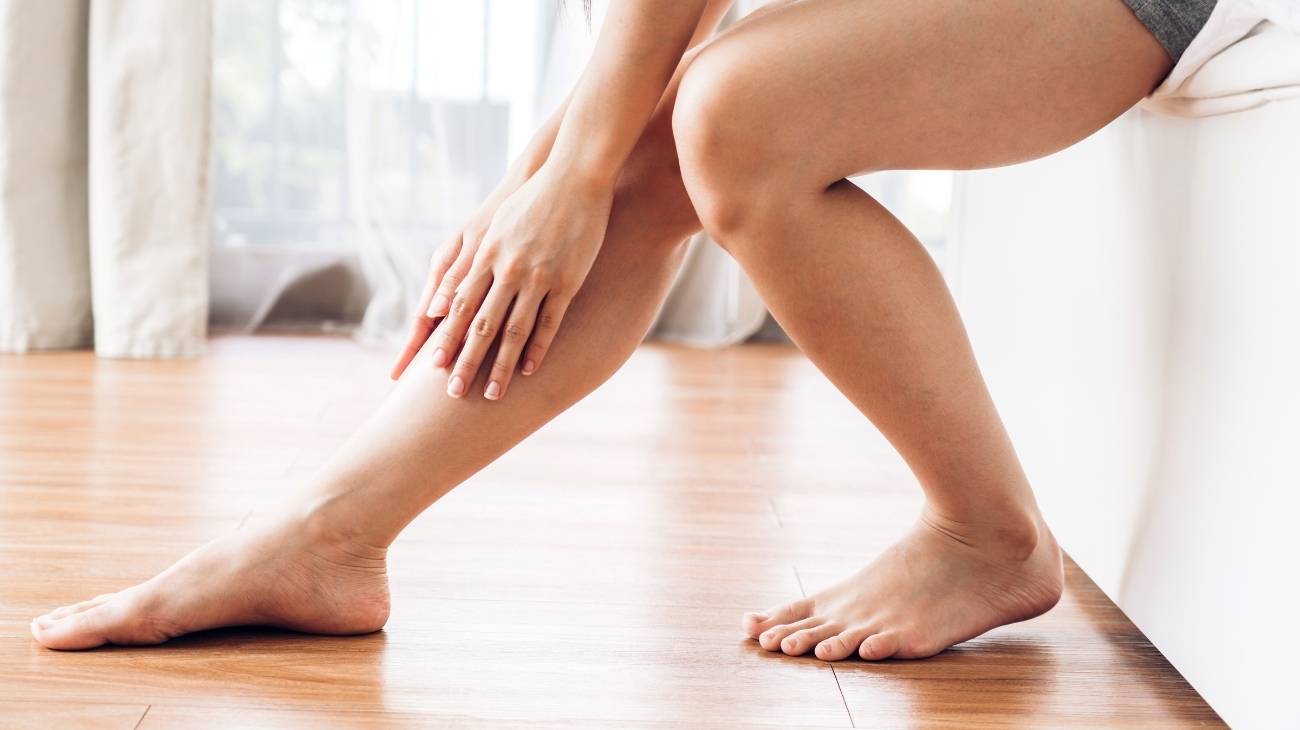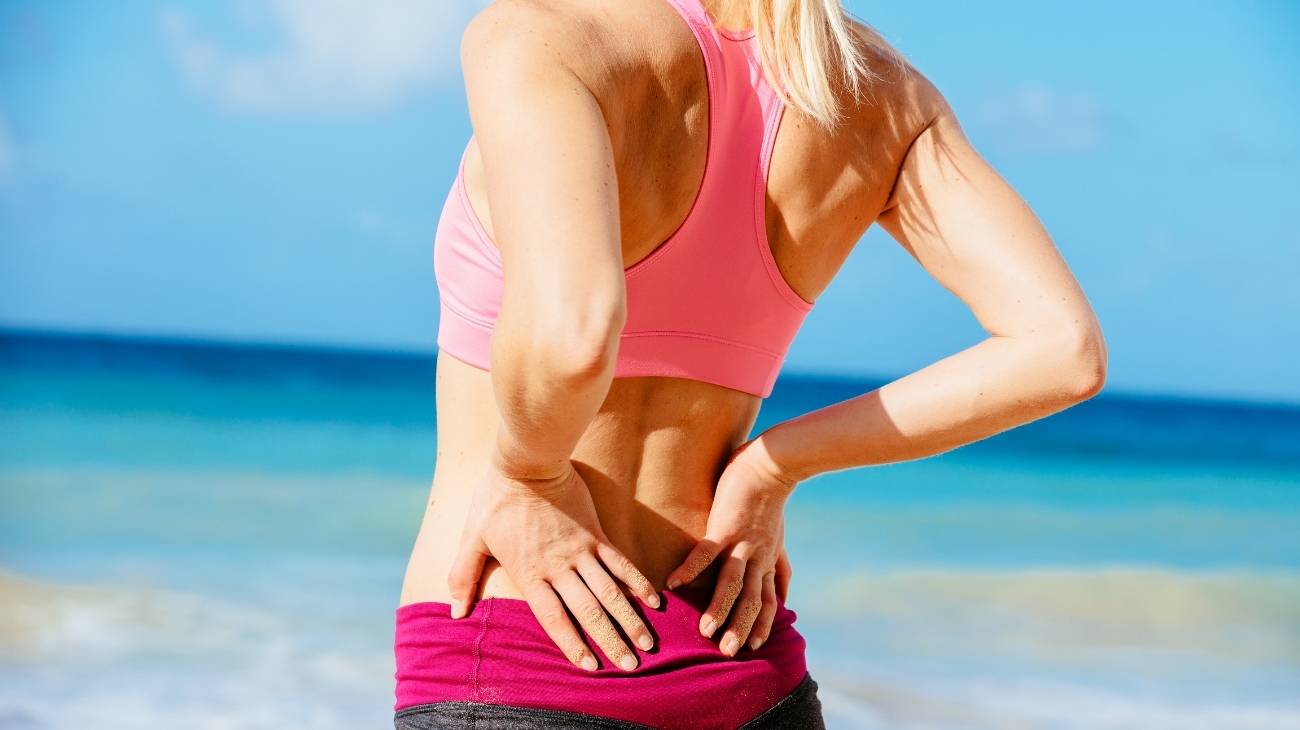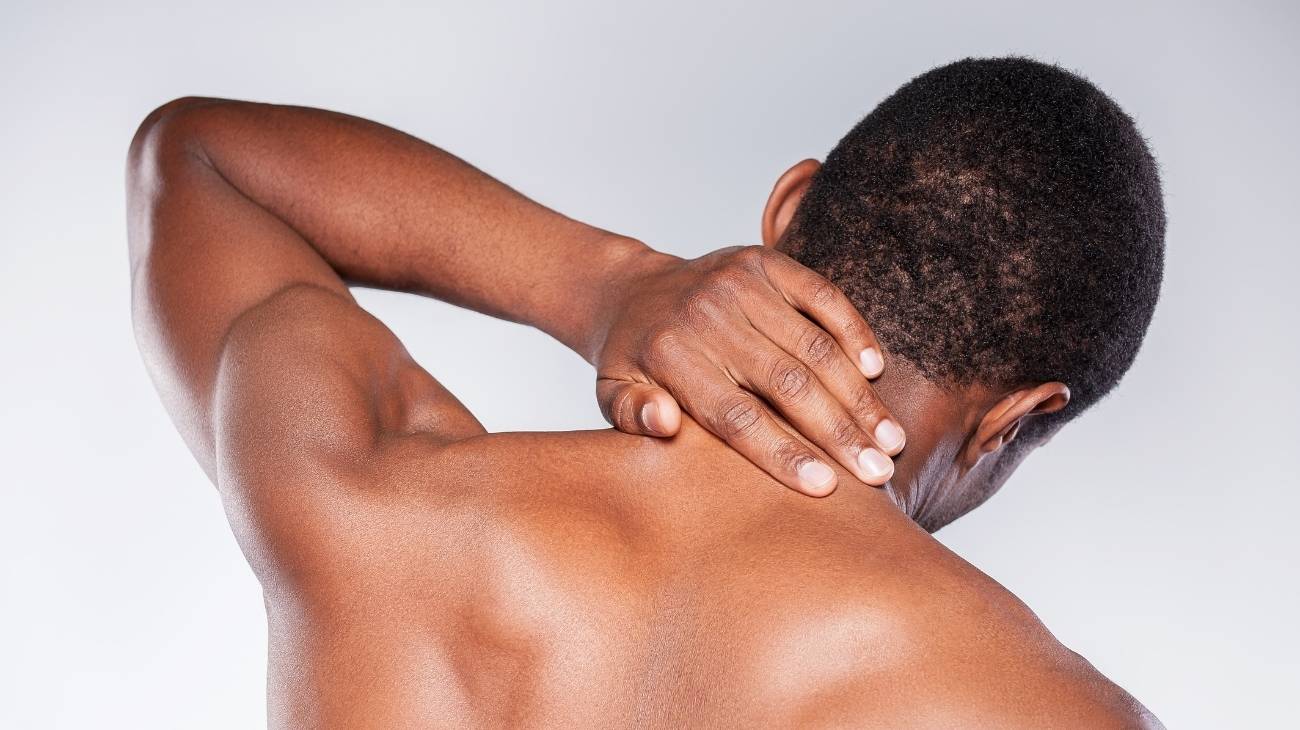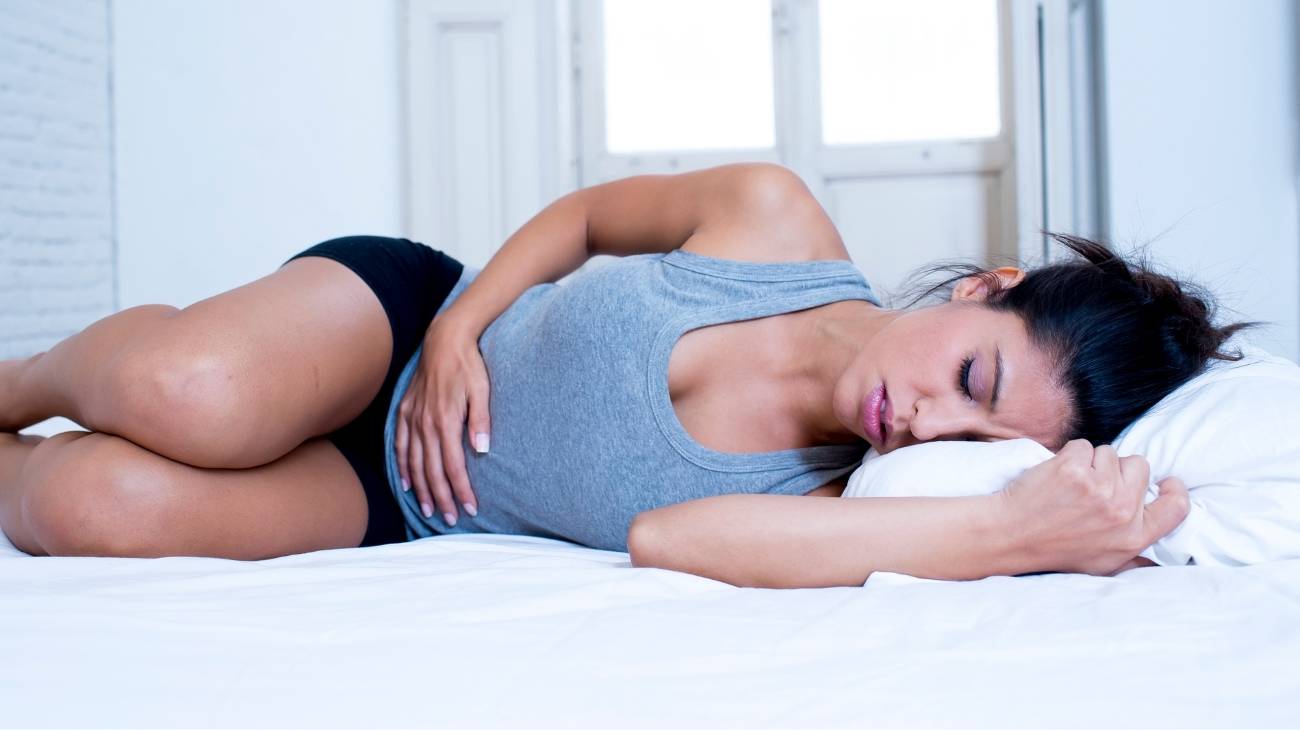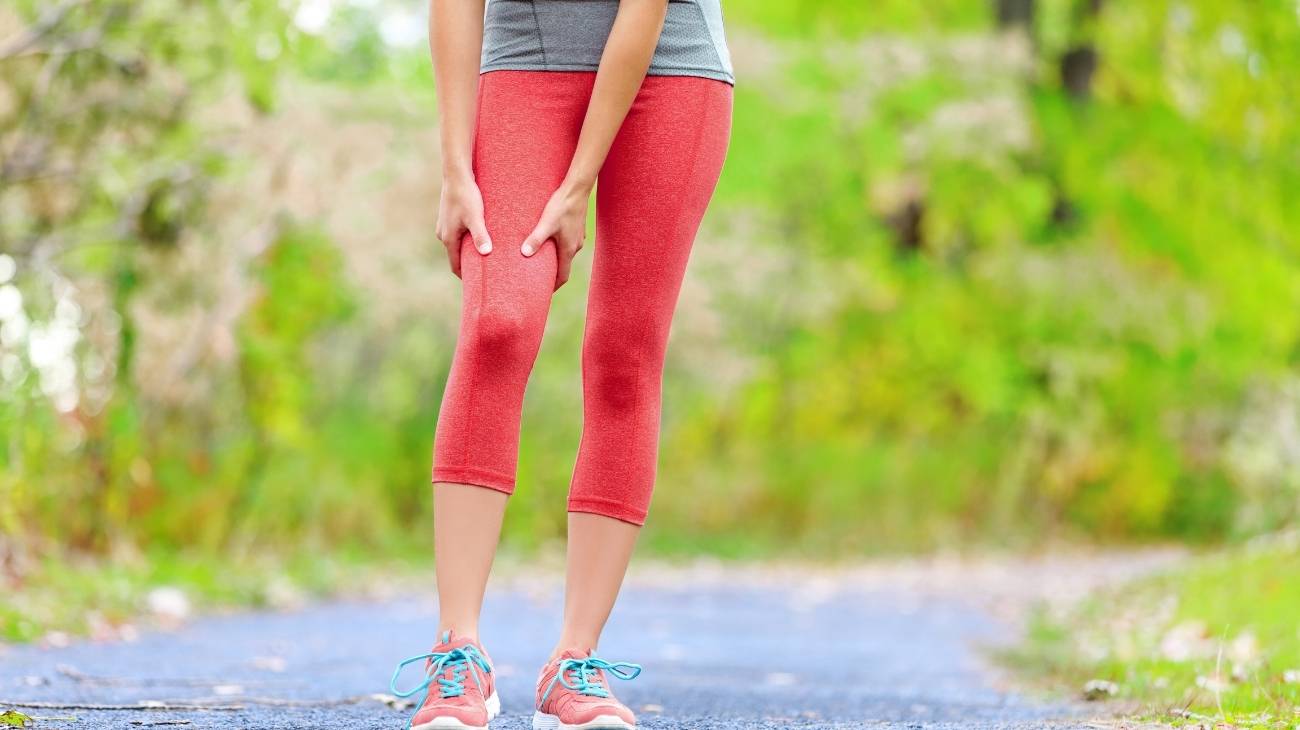- What is leg pain and how to identify it?
- Best products to relieve leg pain
- What causes tired leg pain and what are the causes?
- What kind of diseases can cause leg pain?
- What are the symptoms and types of pain that make us think we have a leg injury?
- How can we relieve swollen leg pain through complementary and non-invasive therapies?
- How to apply the RICE therapy step by step to reduce leg pain?
- How to prevent future leg, knee and foot pain?
- Why should we avoid pills and injections to relieve leg and hip pain?
Do your legs feel tired all the time? are you unable to get to the end of the day because they don't respond? are you more tired than you should be when you walk? have you suffered an injury and want to recover optimally? Relief from leg pain is therefore indispensable in your daily life.
If this is what you need, don't miss this post in which we not only tell you what to do to relieve leg pain but also foot pain. In it you will discover what causes pain in the legs and thighs, why they hurt at all times, what other symptoms you may have depending on the problem you have or how to prevent swelling, heaviness and, in general, tired and aching legs.
What is leg pain and how to identify it?
The leg is a very large part of our body. For this reason, it is easy to recognise when it hurts. We notice an unpleasant sensation in the area that is usually accompanied by other symptoms that also imply a harmful situation for our organism.
The difficult part is to determine which pain we are suffering from and what the cause is. To do this, it is important to recognise, in the first instance, which part of the leg hurts. We may have general pain, pain that is only felt in problem areas such as the knee or ankle, in one leg or in both legs, if the pain goes up to the hip or buttock or down to the foot, etc. With this, we will be able to rule out many pathologies and focus the medical evaluation to achieve an accurate diagnosis much more quickly.
It is also important to recognise whether our leg hurts because of:
- Nerve problems: pain usually comes in bursts or prickling, very strident, and is accompanied by skin sensitivity, tingling or numbness.
- Bone problems: the pain is felt internally, without any damage being noticed in the area where it is felt.
- Soft tissue problems: there are a number of pathologies and symptoms
- Circulatory system problems.
Best products to relieve leg pain
Bestseller
-
2 Calf Compression Sleeve (Black/Gray)
$19.95 -
2 Calf Compression Sleeve (Green/Navy)
$19.95 -
2 Calf Compression Sleeve (Pink/Bordeaux)
$19.95 -
2 Knee Compression Sleeve (Black/Gray)
$19.95 -
2 Knee Compression Sleeve (Green/Navy)
$19.95 -
2 Knee Compression Sleeve (Pink/Bordeaux)
$19.95 -
2 Patella Knee Strap (Black/Gray)
$14.95 -
2 Patella Knee Strap (Green/Navy)
$14.95 -
2 Patella Knee Strap (Pink/Bordeaux)
$14.95 -
2 Thigh Compression Sleeve (Black/Gray)
$19.95 -
2 Thigh Compression Sleeve (Green/Navy)
$19.95 -
2 Thigh Compression Sleeve (Pink/Bordeaux)
$19.95 -
Acupressure Mat and Pillow (Black/Gray)
$49.95 -
Acupressure Mat and Pillow (Green/Navy)
$49.95 -
Acupressure Mat and Pillow (Pink/Bordeaux)
$49.95 -
Acupressure Pillow (Black/Gray)
$29.46 -
Acupressure Pillow (Green/Navy)
$29.46 -
Acupressure Pillow (Pink/Bordeaux)
$29.46 -
Heating Pad for Microwave Classic Bottle Shaped (Hearts)
$19.95 -
Heating Pad for Microwave Classic Bottle Shaped (Oxford)
$19.95 -
Heating Pad for Microwave Classic Bottle Shaped (Sport)
$19.95 -
High Density Foam Roller for Muscle (Black/Gray)
$29.95 -
High Density Foam Roller for Muscle (Green/Navy)
$29.95 -
High Density Foam Roller for Muscle (Pink/Bordeaux)
$29.95 -
Ice Massage Roller Ball (Black)
$39.95 -
Ice Massage Roller Ball (Green)
$39.95 -
Ice Massage Roller Ball (Pink)
$39.95 -
Microwave Heating Pad for Back Pain Relief (Extra Large) (Hearts)
$29.95 -
Microwave Heating Pad for Back Pain Relief (Extra Large) (Oxford)
$29.95 -
Microwave Heating Pad for Back Pain Relief (Extra Large) (Sport)
$29.95 -
Microwaveable Heating Pad for Pain Relief (Hearts)
$19.95 -
Microwaveable Heating Pad for Pain Relief (Oxford)
$19.95 -
Microwaveable Heating Pad for Pain Relief (Sport)
$19.95 -
Pack 2 In 1 Foam Roller High + Soft Density (Black/Gray)
$29.95 -
Pack 2 In 1 Foam Roller High + Soft Density (Green/Navy)
$29.95 -
Pack 2 In 1 Foam Roller High + Soft Density (Pink/Bordeaux)
$29.95 -
Soft Density Foam Roller for Recovery (Black)
$29.95 -
Soft Density Foam Roller for Recovery (Green)
$29.95 -
Soft Density Foam Roller for Recovery (Pink)
$29.95 -
Sport Compression Socks (1 Pair) (Black/Gray)
$19.95 -
Sport Compression Socks (1 Pair) (Green/Navy)
$19.95 -
Sport Compression Socks (1 Pair) (Pink/Bordeaux)
$19.95 -
Trigger Point Massage Stick (Black)
$14.95 -
Trigger Point Massage Stick (Green)
$14.95 -
Trigger Point Massage Stick (Pink)
$14.95
What causes tired leg pain and what are the causes?
We continually encounter circumstances that can cause leg pain, favour its onset or increase its intensity.
Muscle fatigue
Muscles work continuously. The legs are used throughout the day and, generally, we give them little rest. In the case of sedentary people, the lack of activity itself, which atrophies the muscles, causes them to become exhausted at the slightest effort. You must strengthen your muscles but in the right way, gradually and with rest. In this way, your lower body muscles will be better prepared and will not become fatigued so often.
Bad sleeping posture
Just as our legs can ache from standing for too long or with our legs crossed, if during sleep we acquire a bad posture and maintain it for hours, it is normal for our legs to ache. Due to an unnatural position, we are straining soft and hard tissues, including even blood vessels or bones. Try to sleep relaxed, maintaining a comfortable and natural posture from the moment you go to bed and changing it every time you wake up. Before going to sleep, also do some relaxation exercises to stretch and mobilise your knees and feet.
From exercise and strenuous exertion
Any physical activity that is more demanding than your legs are used to and/or that you do for too long will lead to tissue exhaustion. Various things can happen: muscle strains, stiffness, tearing of tissues, cramps, etc. and, with this, pain and other symptoms, always depending on the problem we have suffered and its severity.
If you feel pain in your legs when making these efforts, you should stop immediately. The next step is to find out what the problem is and treat it accordingly. Of course, to reduce leg pain, rest is necessary. In addition, other practices such as massage or compression therapy and medical consultation are also appropriate.
Stiffness
Exerting our muscles more than usual, if it does not lead to moderate or severe injuries, will cause us to wake up with stiffness at the very least. Although the cause is not clear at a biophysical level, we do know that these are nothing more than muscle pain that appears after a delay, hours after the effort has been made. The muscle will have become inflamed but there is no external evidence of this.
Overweight
Being overweight means that the lower part of our body is continually and relentlessly loaded. So it is common that if you weigh more than your sex, age, build, height and other factors, your legs will ache. This happens when you exercise or even when you walk, but on many occasions the pain can come out of nowhere, without any physical activity. When we are already fatigued, if we suffer from other illnesses such as diabetes, if our lifestyle is sedentary or if we suffer from obesity or severe obesity, etc.
To this we must add that any effort we have to make, however small, is multiplied by the extra load we have; it is like going to do sport with a rucksack full of stones hanging down. This type of pain will only disappear if you lose weight and, even then, you will take time to see the results, as your legs must recover after having spent a long time carrying extra weight, deteriorating day by day.
In pregnancy
Pregnancy is exactly the same as being overweight. We gain weight and carry a load 24 hours a day, 7 days a week, from which we cannot rest for a single moment, not even when we need to make great efforts, which means extra fatigue for our legs, which get tired earlier and more easily. In this case we must add that fluid retention and the circulation problems that often occur also make our legs ache.
Stress and emotional causes
Psychological problems also affect our body. When we have negative emotions they surface in various ways, and one of them is by making us feel pain, in this case, in our legs. We have a direct cause of tension (as with stress) which obviously causes the body to be in an unusual situation on a constant basis. It is easier for this problem to cause physical damage if our tissues are not strengthened.
The easiest way to ease the pain is to work directly on the tissues, relaxing them from the buttock with deep massage and focusing on long muscle stretches. Of course, you should try as soon as possible to get rid of those negative emotions that cause pain and other signs that will also become evident.
What kind of diseases can cause leg pain?
As far as diseases and pathologies are concerned, there are a great many of them that affect our legs and cause damage that varies in both type and intensity.
Arthritis
Arthritis causes joint inflammation, so if you suffer from this condition it is normal that both the joint and the surrounding area will ache. Thus, especially in the case of the knee, we have pain in the knee itself as well as in the thigh and towards the shin, something that can be confused with generalised pain.
Osteoarthritis or arthrosis
This is a type of arthritis that causes the bones to rub against each other as the cartilage wears down. In the absence of a lining, bone tissue forms, usually with deformities, including spurs. The pain is severe, the joint in question becomes stiff and loses flexibility and, with it, range of motion, a creaking sensation and, of course, swelling that virtually never subsides. This is a degenerative disease, so its symptoms will get worse and worse, causing chronic pain and the ability to bend and even move may be lost.
Sprains
An abnormal stretching of the ligaments will lead to a sprain if it is very abrupt or if it is sustained for a long time. As with any other problem of this type, the severity varies, as do the symptoms, recovery time and possible sequelae.
It can range from the ligament stiffening up and remaining distended with difficulty returning to normal to a tear of varying severity. Depending on this, there will be more or less pain, swelling, instability and/or joint disability.
Rest is absolutely necessary in order to prevent muscle atrophy. This means that you should move around a bit depending on your symptoms, with support if necessary. Generally, drug treatment is not necessary unless the sprain develops, for example, into an infection because it was not treated in time. Treating this injury with cold in the first few hours is ideal to reduce inflammation.
Fractures
These are usually caused by direct impact or overload (in this case we usually find a hairline fracture, not a complete break). A complete fracture in a large bone of the leg is very difficult to occur (in traffic accidents), but its pain is consequent, as will be its treatment. On the other hand, if these fractures occur in the joints, we run more dangers, as these areas are much more delicate. This is because small fragments can interfere with the functioning of ligaments, cartilage, etc.
In any case, medical assistance is required and surgical intervention is quite possible, absolutely necessary in the case of complete fractures of the tibia, fibula or femur. Immobilisation for fusion of the bone tissue and rest will be essential and in time therapy with an expert osteopath may be necessary.
Bursitis
Bursitis is a pathology that occurs in the joints because it is very specific. It consists precisely of an irritation of the bursae, small bags that are found in the joint areas to cushion the movement of the bones and other tissues and prevent friction. The bursae become inflamed, painful and even rupture, and no longer fulfil their cushioning function.
This means that bursitis can occur in different areas of the leg: knee, ankle or hip. The symptoms of the pathology are identical, although depending on the affected area and other aspects such as your daily activities or simply the way you walk, the pain may be greater or lesser, and the inflammation that occurs may be considered a deformity. There is also stiffness, redness and the skin becomes much more sensitive.
Tendinitis
In this case we would speak of irritation and/or inflammation of the tendons of the leg, which are numerous. They are the fibres that connect each muscle to the corresponding bone. Therefore, if we do not take care of tendonitis, we can suffer a tear and, with it, joint instability if it occurs around the knees. Before this you will suffer dull pain, more intense pain when moving the leg, visible swelling of the area and great sensitivity.
There is medical treatment for tendinitis but, because it is usually easily cured, our advice is to opt first for conservative practices such as rest, a good massage, stretching and strengthening exercises.
Muscle strain
A muscle is pulled because we stretch it too far, far beyond its capacity. It is more likely to occur if the stretch occurs quickly and abruptly or if it is held for too long. It is usually caused by a bad movement (improper use of the muscle) or overloading. You will notice that the affected area becomes inflamed and even a haematoma appears. The PRICE therapy is, without a doubt, the simplest and most natural remedy and, at the same time, the one with the best results. All you have to do is rest the affected tissue (you can use supports), apply cold and elevate your leg so that it doesn't swell or hurt so much.
Varicose veins and poor circulation
There are several problems related to blood circulation that lead to leg pain and, in general, cause legs to swell considerably. Deep vein thrombosis and varicose veins in general are the main culprits. Essentially, what happens is that the blood does not circulate properly, pooling and swelling the veins and even forming clots. In addition, this prevents the nutrients in the blood from reaching the tissues below these blockages. As a result, the cells cannot perform their functions optimally.
Inflammation occurs and this becomes much more evident when we have a clot. In this case in particular, a sharp pain appears. Other symptoms are redness and increased skin temperature, heaviness, prickling and cramping and even oedema.
It is important to treat the root cause by using all kinds of means to improve blood circulation but, of course, it is also necessary to act on the effects we are suffering from. For this, compression therapy will be the most appropriate, although it may not be enough and you may need medical intervention.
For sciatica
Sciatica is a circumstance caused by a nerve problem which, despite its root being in the back, can cause the whole leg to ache, in a very unpleasant way, with varying intensity, to the point of being incapacitating.
Rest is essential because the pain is intense and incapacitating, but it is also important, so that the tingling that usually occurs does not turn into numbness, that we receive leg massages. When you feel better, especially if you are prone to this problem, try to strengthen the abdominal and lumbar area, so that it is more difficult to interfere with the nervous system and serve to support and protect the injured area.
Osteomyelitis and other infections
Osteomyelitis is a bone infection that we want to highlight, but we must make it clear that infections in other tissues can also occur, which share pain and other symptoms. Osteomyelitis involves bone pain, fever and even chills (especially at night), inflammation with heat and redness in the area, excessive sweating and the opening of a wound from which pus will emanate and affect the bone tissue.
In the case of infections, antibiotics must be taken to stop the infection (always with a doctor's prescription) so that the damage does not spread to nearby areas. If the bone has become necrotic, it will have to be surgically removed and a graft made or the empty area filled in.
Paget's disease of bone
It consists of a bad recycling of bone tissue that makes the bones become more fragile and even deformed. In both cases there is a lot of pain depending on the circumstances. There is a greater chance of fracturing a bone and also of getting a pinched nervous system in the spine, which also leads to pain, among other areas, in the legs.
Do low- and medium-intensity physical activity, avoiding pressure on the affected bones. To treat the disease, you should know that there are specific drugs for it, but it is likely that you will need surgery, especially if your case is very serious.
Other bone diseases
There are other bone diseases that include pain in their symptoms. However, these are not very common. Even so, it is useful to be aware of them in order to have something to work with in the event of not finding a correct diagnosis. Some of them are Blount's disease or multiple myeloma bone disease.
What are the symptoms and types of pain that make us think we have a leg injury?
An injured leg can present a multitude of symptoms, especially if we consider that the injury can occur in very different places. In any case, they are as follows:
Most common types of symptoms
- Pain: In such a large area you will find pain of all degrees of intensity and coming from veins, bones, ligaments, tendons, muscles, menisci, etc. This means that the pain can be dull, squeaking, stabbing, sustained over time, mild, moderate or intense, focused or general, etc.
- Swelling: Injuries, wear and tear and various illnesses undoubtedly make the legs one of the areas that swell the most. On many occasions this symptom is accompanied by pain, but on others it may not. This is a very important indication when it comes to ruling out pathologies.
- Stiffness: Appears mainly in worn bones and strained muscles that have been pushed beyond their limits and are unable to return to their natural state. It causes difficulty or inability to perform movements.
- Redness: Direct traction and very irritated and inflamed tissues are the main cause of reddening of the skin in the painful area. Occasionally, circulatory problems can also cause the skin to redden, but this is less common.
- Reduced movement: The pain itself will make movement difficult, both in joints and in walking. However, the shortening of tissues, tissue displacement, poor joint play, the appearance of lumps, cysts and other elements that interfere with mobility as they are located in key areas will also have this effect.
- Joint instability: Of course, there are problems that affect both the knee and the ankle that compromise the stability of these joints. We are unable to have control over their mobility.
- Haematomas: They appear in the event of blows, as a direct sign of these. However, they can also be the result of an internal problem such as bleeding from a fibre fissure, lipoedema, a cyst, a circulatory problem or a fracture.
- Spasms: Muscle and tendon strain are the main reasons for spasms. They also occur in the event of trauma, due to a sudden change in the condition of our organism.
- Clicking noises: These are usually of a bony type in the knee, although we can also hear a dull noise when soft tissue collapses, when there are tears due to sudden movements.
- Sensitivity: We notice it in cases of tendinitis and when we suffer from dysfunctions of the nervous system or when the dermis is very affected by the internal problem, whatever it may be.
- Tingling or numbness: These are caused by a lack of nutrients in the tissues (poor circulation or inability to absorb them) and by nervous system problems. In addition, we may feel tingling and palpitations as a direct and immediate consequence of a blow.
Types of symptoms depending on the area
- Pain in the buttocks: The buttocks are usually pulled and the muscles can become stiff, so that they do not return to their usual position. The pain is sudden in these cases and the problem can be solved quickly and easily with a deep massage. However, it is important to consider dietary changes. We can also suffer symptoms derived from hip or lumbar dysfunctions.
- Pain in the thighs: As in the previous case, the thigh suffers damage, usually related to the soft tissues, with tendonitis and cramps being the most common problems. It is also often here that we begin to feel the pain of sciatica, which is electrifying, very strong, and includes prickling and tingling.
- Pain in the knee: The knee includes a complete symptom picture, as it contains all the different types of tissues in the leg. Dry, extremely intense pain, joint instability, inflammation, deformation and displacement, bone wear and tear, formation of spurs that damage the surrounding tissues, etc. The list is long and the problems associated with it are many. The list is long and the associated problems are serious if not treated in time.
- Pain in the calves: Cramps are very common, with very strong and sudden pain, which are accompanied by a dislocation of the tissue that is very evident, creating a bulge. It is also a dominant area for varicose veins, which mark the veins above the skin, are hard and coloured because they retain the blood, preventing it from flowing. Bruises appear very easily in this area as a result of blows due to the great sensitivity of the calf.
- Ankle pain: Ankles are, like knees, very complicated. For the same reason, the list of symptoms is equally or even more extensive, and many of them are even more intense. The dangers of sprains and the worse incidence of overweight mean that they suffer much more than the rest of the leg in all aspects. Bone sprains, fractures, osteoarthritis (even gout), bursitis, osteochondritis and syndromes, together with the delicacy and small size of the parts mean that the ankle suffers from considerable pain, considerable swelling with a regular increase in temperature and even fever, reduced mobility, numbness and numbness, haematomas, instability... Undoubtedly, a part of the body that you must take care of and keep in shape.
- Foot pain: Also extremely delicate, we highlight bone pain due to problems such as osteoarthritis, the appearance of osteophytes, Paget's disease and specific problems such as metatarsalgia, ingrown toenails, Morton's neuroma or plantar fasciitis, among others. Of course, other typical pathologies such as tendonitis or bursitis are also likely to occur in the foot. Dull, long-lasting, incisive pains, discolouration of the tissues, considerable inflammation, heat, bruising, reduced ability to move...
How can we relieve swollen leg pain through complementary and non-invasive therapies?
There are many alternative therapies to use to get relief from leg pain. In this case, we show you a good number of them that are non-invasive and do not require the use of medication of any kind.
Cryotherapy
Putting cold on the area of the leg that hurts is really effective as it acts as an analgesic while numbing. In this way, you get almost immediate relief from leg pain. In addition, it is also good to lower the temperature of the area if there is swelling, because the blood flow and temperature will have increased and we should try to avoid this situation.
In addition to using specific products to apply cold such as ice gel packs or cryotherapy socks, you can take advantage of the shower to soothe your legs with cold water. It is important to point out that the pain for which cryotherapy is recommended is acute pain, sudden pain caused by trauma or injury, as well as pain caused by illnesses that cause this symptom to appear abruptly.
Thermotherapy
This consists of applying heat to the area in which we feel pain. Contrary to cryotherapy, it is useful when the pain is no longer acute, i.e. when at least two or three days have passed since the injury or sudden onset. It is also the necessary therapy in case of chronic pain or for pain that appears due to other problems but in a slow and gradual way without being too intense.
We will never do thermotherapy if we have swelling. You can use heat packs to heat in a microwave and keep them on the area for about 20 minutes. If a large area or the whole leg hurts, the best thing to do is to take a hot bath or go to saunas.
Hot and cold therapy
Hot and cold therapy, also called contrast therapy, involves alternately applying heat and cold to an area. In the case of the legs, we recommend this therapy if you have poorly nourished tissues, if you have joint problems or suffer from rheumatism or other bone diseases such as osteoarthritis. For a correct application we must apply both cold and heat for 2-3 minutes each.
Compression therapy
Compression is used to reduce the mobility of the areas to be treated, such as in the case of a joint problem, dislocation or fracture, etc. In this way, we ensure that the injured area remains in place for faster and more effective healing.
But it is also very important to note that we can perform compression therapy to treat circulatory problems, which is what we really do in the clinic. Whether you have poor blood supply, slow blood flow, a tendency for blood clots or thrombi to form, or even if you have or have had oedema, compression bandages will be necessary.
Massage therapy
Massage is particularly suitable for tired legs because it is a large area that can be worked on comfortably. The physiotherapist or specialised masseur can both treat badly affected areas and extend his or her massage to de-stress tissues, loosen them, get the blood flowing, etc. The ideal is to wait a few days after the injury has occurred or if your pain is very severe because you should not strain the leg muscles and the massage can be very painful and even counterproductive.
Acupressure therapy
Acupressure is very popular for leg injuries because it involves pressure on points on the body that are not necessarily located in the affected area. This means that there is no contact with the injured area, which is sometimes necessary in order not to make the situation worse. Each of the many points of this practice, born of Traditional Chinese Medicine, helps to treat symptoms and illnesses as well as generally helping to reduce pain.
Other effective alternative therapies
- Natural remedies using plants: You can resort to certain plants to improve the condition of your legs by reducing pain and other symptoms and their causes. The most suitable are Ginkgo Biloba if you have circulatory problems, red vine and witch hazel for tired legs, horsetail, ginger, rosemary and turmeric as anti-inflammatory and mint, valerian or nettle if you are looking for, directly, that are analgesic.
- Acupuncture: Acupuncture is sensational whether you have generalised leg pain or if you have injured a particular area as there are points of action to treat the whole leg and to soothe generalised pain throughout the body. Thus, the options are many. Keep in mind that this therapy involves the introduction of needles into different layers of the tissues and it is counterproductive to work on certain points that relieve leg pain in pregnant women. These, although very good at acting as analgesics, should not be stimulated.
- Kinesiotherapy: This therapy is one of the most appropriate in specific circumstances. On many occasions, the lack of movement is the cause of the problems that cause pain. Absolute rest, which also involves spending extra hours in bed, delays the cure of the problem. We need to move, but in the right way, and movement therapy will bring benefits at different levels. Neuromuscular stretching, massage and movements at specific angles and many other movements help to improve quickly and avoid the damage of numbness that can be suffered when we are injured and drastically reduce our activity.
- Aromatherapy: Primordial if the pain is due to emotional reasons and an ideal therapy to complement the massage. A pleasant aroma relaxes us, which means that we are more receptive to the kneading of the tissues, resting them. It also helps us to put aside, for a while, those problems that are always on our mind. What we need to do is to use a natural oil from a plant associated with the problems we are suffering from. Both the topical properties of the product and the aroma itself will have an effect on our body.
- Osteopathy: This is a very effective therapy if the pain we have is due to bone problems such as fissures, fractures or bone diseases or not, which degenerate the bone tissue. The osteopath carries out a complete treatment that includes much more than manipulation (which is the main action), as in the case of massages. The aim is to restore the balance of the area and the parts associated and involved in its normal activity. To do this, a complete study of these is carried out, the dysfunctions are evaluated, work is done on them and, afterwards, unloading massages, tissue alignments and an endless number of available actions are carried out.
How to apply the RICE therapy step by step to reduce leg pain?
The RICE therapy is used as a first aid protocol in circumstances of recent injury. This means that its application should be carried out if the pain we suffer is sudden or acute and our legs are swollen, not when it has already become chronic.
The steps you need to follow are:
- Protection: This first step is the result of an update of the RICE to the PRICE therapy and will be carried out whenever there is a circumstance of danger. It involves taking any action that prevents pain and other symptoms from worsening. For example, we will stop the activity we are doing, we will change our posture to avoid resting on the foot and leg, we will cover the area, etc.
- Rest: It is very important that you do not continue to strain your legs (if this is the case) and that you let them recover from the fatigue. In addition, the cause of the pain, which may be an injury, must be treated and, practically always, resting the affected area is the best option. In this way, you prevent further tissue damage and promote recovery, especially if the tissues have been fissured or exhausted. Avoid total rest because the result will be counterproductive and the tissues may atrophy. Simply try to avoid exertion and take time out of the day to rest. When you do move, do so with the necessary support, such as a crutch or a cane, so as not to burden your legs.
- Ice: To stop swollen legs, there is nothing like putting cold on them or finishing a shower with cold water. In addition, the low temperature is also analgesic, so that by numbing the area, removing inflammation and with the analgesic effect itself, the relief will be immediate.
- Compression: More than likely you will need to use some kind of compression. We have already seen that this is suitable if you are retaining fluids, if your tissues have been distended or injured in general and need to recover properly. You have options such as a compression bandage or a compression thigh brace to prevent swelling, promote blood flow and keep the area immobilised to some degree.
- Elevation: Finally, whenever you have the opportunity, try to elevate your legs. This will prevent them from swelling or help them to deflate at the end of the day. This is because we are making it difficult for too much blood flow to flow, which is typical of circumstances such as simple bumps, injuries or some illnesses.
How to prevent future leg, knee and foot pain?
If your leg pain is a concern and you don't want it to get worse (or not to appear if it hasn't yet), you'll be glad to know that the preventive guidelines are quite simple.
- Adequate weight: Stay at your healthy weight as the lower part of our body supports much more weight than the upper part. The legs have several functions and it is not advisable that they have to carry an extra load, as this implies an overexertion 24 hours a day; they have no rest. Of course, you will avoid all the problems that come with being overweight. Vary your diet and stay active or active.
- Hydration: Hydration is always important but perhaps, of all the parts of the body, the legs benefit the most. Why? Their size. They are full of all kinds of tissues and they are also very long, which in itself is not a good thing. Therefore, they must be constantly cleansing themselves of waste and toxins and need large amounts of oxygen to function optimally (remember that the legs and feet have many functions). Drink plenty of water. Swap your drinks for herbal teas. Of course, if you do sport, drink even more to replenish yourself.
- Postural hygiene: For your legs, posture is an essential thing to do all day long, even when you are resting (you can put a cushion under your knees). Try not to cross your legs when you sit down, keep them bent, at right angles if possible. As in bed, when resting on the sofa, put them up with a cushion to support them. When standing, try not to keep your leg completely straight or you will put too much pressure on your knee; the ideal is to maintain a minimum flexion by changing the point of support every so often.
- Stretching: Whenever you have to do a physical activity that requires forcing the legs for a long time or that requires high intensity, it is recommended to warm up with mobility and stretching. The aim is to activate the body so that it prepares itself. With very simple exercises of short duration, the tissues will be able to give much more without negative consequences.
- Physical activity: When exercising, adapt intensity and other characteristics to your possibilities. Work little by little, from less to more, and you will be able to practice sports very actively but it is necessary that you do it according to your capacities. Start by walking daily, then introduce jogging, on the gym machines, never overdo it with weight lifting or weight movement and start each session with less weight than you are usually able to work with and increase it when the tissues are warmed up. Aerobic exercise is the most recommended to avoid the phenomenon of tired legs.
- Rest: Rest your legs. Do this when you put them under a lot of strain, such as when playing sports. But also at work or simply rest from maintaining the same posture; do not spend too much time sitting, squatting or standing without moving or the tissues will weaken and stiffen.
- Leg and foot exercises: Do exercises specifically designed to maintain and improve the muscle tone of the tissues. This will make you less tired doing any activity and less likely to injure yourself. The best thing to do is to see a physiotherapist (or an osteopath if you only have bone pain) who will tell you which exercises to do and how to do them.
- Massage: Of course, make time for yourself to enjoy a good self-massage; there are both stimulating ones to increase blood flow and prepare the tissues at the start of the day and relaxing ones to decongest the legs and prepare them for a comforting and restful sleep. If you think it is necessary, you should also visit a professional masseur periodically to check the state of your legs and to give you indications to improve the massages you give yourself.
- Abdominal strengthening: If your problem is of nervous origin, do exercises to strengthen the abdominal area. These help the lumbar nerves not to be compressed so easily and, therefore, not to carry pain down the leg. Having a strong central area of our body will prevent the legs from being overstrained and we will be able to avoid leg injuries.
- Suitable clothing: For both legs and feet you will find compressive garments that especially help to protect us when we exercise or do high intensity activities (short or long tights, ankle braces, compression knee braces, etc.). But we should also pay attention to the clothes and shoes we wear. Cotton fabrics and medium pressure will make us less fatigued, will allow the body tissues to flex, stretch and tense to the right extent and will be more comfortable when carrying out any activity. As for footwear, try not to wear completely flat soles, but do not overdo it with high heels either.
- Cryotherapy: If you have problems with heaviness, don't forget to apply cold to your legs, either after showering, swimming or with cryotherapy products such as cold gel packs to treat tired legs.
Why should we avoid pills and injections to relieve leg and hip pain?
Pain is not cured by taking medication, that's the first thing you should know. It can alleviate it for a short time, but that is something you can already achieve, and with great success, with the therapies we have discussed above, without suffering the negative effects of drugs.
Moreover, their composition is chemical. That means that we are introducing chemicals into our body, which always have a negative impact, however small, especially in the medium and long term if we abuse the consumption of drugs. We cannot forget that self-medication is always contraindicated.
If, despite having tried to relieve the pain, you still feel that you need to take a drug, go to the doctor's surgery and, after an assessment, let him or her decide what you should take. He or she will prescribe the appropriate painkillers and, if necessary, a complete treatment according to your pathology.
References
- Marieb, E. N., & Hoehn, K. (2007). Human anatomy & physiology. Pearson education. https://books.google.es/books?hl=en&lr=&id=x1uEB68iitwC
- Edgerton, V. R., Smith, J. L., & Simpson, D. R. (1975). Muscle fibre type populations of human leg muscles. The Histochemical Journal, 7(3), 259-266. https://link.springer.com/article/10.1007/BF01003594
- Behrman, A. L., & Harkema, S. J. (2000). Locomotor training after human spinal cord injury: a series of case studies. Physical therapy, 80(7), 688-700. https://academic.oup.com/ptj/article/80/7/688/2842518
- Blue, J. M., & Matthews, L. S. (1997). Leg injuries. Clinics in sports medicine, 16(3), 467-478. https://www.sciencedirect.com/science/article/abs/pii/S0278591905700351
- Gallo, R. A., Plakke, M., & Silvis, M. L. (2012). Common leg injuries of long-distance runners: anatomical and biomechanical approach. Sports health, 4(6), 485-495. https://journals.sagepub.com/doi/abs/10.1177/1941738112445871
- Touliopolous, S., & Hershman, E. B. (1999). Lower leg pain: diagnosis and treatment of compartment syndromes and other pain syndromes of the leg. Sports medicine, 27, 193-204. https://link.springer.com/article/10.2165/00007256-199927030-00005
- Beith, I. D., Kemp, A., Kenyon, J., Prout, M., & Chestnut, T. J. (2011). Identifying neuropathic back and leg pain: a cross-sectional study. PAIN®, 152(7), 1511-1516. https://www.sciencedirect.com/science/article/abs/pii/S0304395911001424
- Burrus, M. T., Werner, B. C., Starman, J. S., Gwathmey, F. W., Carson, E. W., Wilder, R. P., & Diduch, D. R. (2015). Chronic leg pain in athletes. The American journal of sports medicine, 43(6), 1538-1547. https://journals.sagepub.com/doi/abs/10.1177/0363546514545859
- Selim, A. J., Ren, X. S., Fincke, G., Deyo, R. A., Rogers, W., Miller, D., ... & Kazis, L. (1998). The importance of radiating leg pain in assessing health outcomes among patients with low back pain: results from the Veterans Health Study. Spine, 23(4), 470-474. https://journals.lww.com/spinejournal/Abstract/1998/02150/The_Importance_of_Radiating_Leg_Pain_in_Assessing.13.aspx
- Taylor, R. S., Desai, M. J., Rigoard, P., & Taylor, R. J. (2014). Predictors of pain relief following spinal cord stimulation in chronic back and leg pain and failed back surgery syndrome: a systematic review and meta‐regression analysis. Pain Practice, 14(6), 489-505. https://onlinelibrary.wiley.com/doi/full/10.1111/papr.12095

